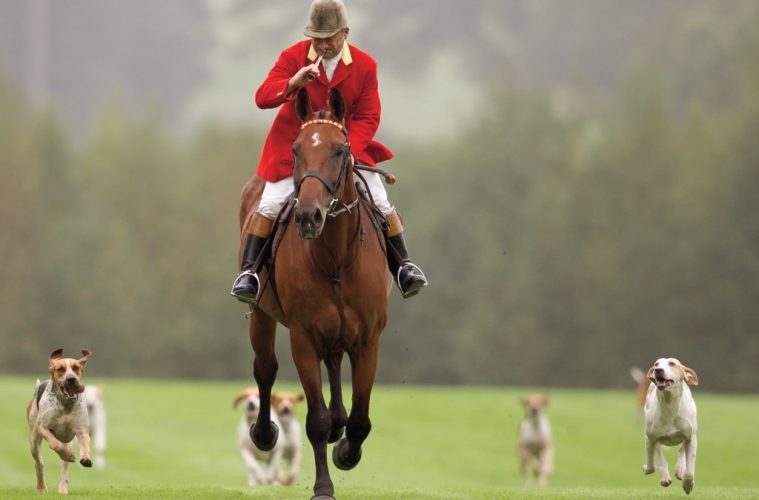Myopia hosts one of the longest-running hunts in the country. By Jeanne O’Brien Coffey
Long before the polo craze hit the North Shore, Myopia was known for hunting. In fact, in 1881, the hunt stole the spotlight from baseball, the first sport played by club members. Since then, the Myopia Hunt has been known as one of the oldest recognized hunts in continuous existence in America.
At that time, Myopia Hunt Club centered around Winchester, Massachusetts, where the Prince family, all sport and horse enthusiasts, had their home. As Alan Forbes writes in his book, Early Myopia, “It is hardÂ…to believe that this territory over which Myopians chased the fox was through parts of the now thickly settled towns of Winchester, Stoneham, Lexington, Arlington, Belmont, Medford, and Woburn. At that time, however, there were many farming districts in these towns.”
In many ways, the history of the Myopia Hunt mirrors that of the history of the country, from stories of development encroaching on open fields to the leading role women took in keeping the hunt active during war times. “The Myopia hunt is special because of its ability to adapt to a changing world,” says Mary Ann Esdaile, who has been hunting with Myopia since 1978 and has served on the Myopia Hunt Committee for about 15 years.
The first change came shortly after the hunt was established. In the late 1800s, the hunt started using land leased at Gibney’s Farm in Hamilton, and soon after purchased the farm and moved the operations to Essex County. From there, the hunt grew and thrived, both as a social scene and a place for city dwellers to experience green fields and fresh air. While it was considered unladylike for women to play polo, women were always welcome to participate in the hunt, Esdaile says. “Women have always had an active role in the Myopia Hunt,” she explains, adding that the Hunt Committee, which makes the decisions on how the hunt is organized, as well as plans meet dates, fundraisers, routes, entertainment, and all other business, currently has seven female members, including new joint master Kim Cutler.
“Actually, we owe the continuous existence [of the hunt] to a woman,” Esdaile says. Anna Prince, the wife of Master Gordon Prince, kept the hunt going during World War II, when her husband was in service along with every other able-bodied man. Mrs. Prince took the horn and kept the hounds going, with the help of her young children and an older hunt servant named Chuck Haley, “so the boys would have something to come home to,” Esdaile recalls.
As late as the 1950s, both live hunts, where dogs and riders chase an actual fox, and “drag” hunts, where a scent is laid for the dogs and riders to chase, were available for participants. However, development encroached on the live hunt in 1952, Esdaile says, when a clever fox dashed into the town library. “Live hunting became too unpredictable,” she says.
These days, the drag hunt doesn’t even involve the scent of a fox, Esdaile notes; instead, the dogs sniff for Anisette liqueur. “The hounds are trained as puppies to follow this scent, and treats are given as reinforcement,” she explains, adding, “This practice prevents hounds from following live quarry, such as real foxes or deer and coyote. [Therefore,] no live animals are ever harmed.”
Caring for the land and the creatures that inhabit it is a key reason for the hunt’s continued success, Esdaile says. “Our hunt has survived two world wars, pressure from land developers, and the loss of country ways,” she notes. “We owe this to our far-sighted masters and dedicated members of the field, who combine their love of this sport with respectful relations with landowners and support and development of local conservation organizations, to ensure a long and successful future for the Myopia Hunt and preservation of open space for all to enjoy.”

